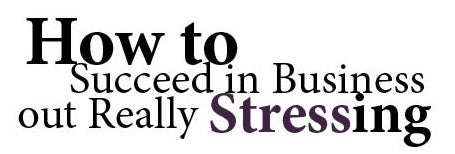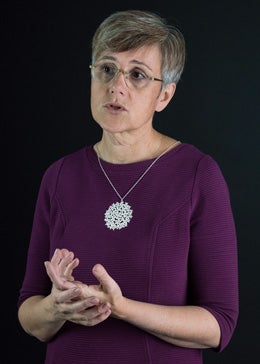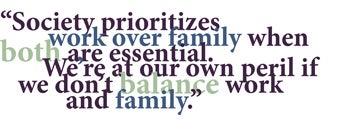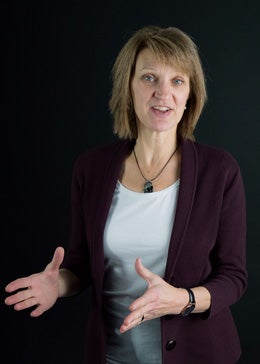
Our eight-part guide to improving your work life, from work-life balance to embracing doubt, taking care of your soul, and—just maybe—letting yourself cry in front of coworkers.
By Marybeth Reilly-McGreen
That coworker. You know the one. The one who is completely, totally dedicated to her job 24/7, 365 days a year. The one who is never late, who never misses a deadline. She arrives before you, leaves after, and never, ever takes lunch. Family crises don’t seem to happen to her. It appears she exists only to do her job.
And then there’s you. You arrive late to work on the day of your big presentation. In your rush to get to the office, you spill coffee on yourself and step into a sizeable puddle in the parking lot. Your hair is a wet mess because wind gusts upended your umbrella. And you’re just through the door when your phone rings. It’s the school nurse: Your son just threw up. You hang up, your own stomach churning at the thought of telling your boss that you need to leave, and at the worry that your perfect coworker will advance as you fall further behind.
One-third of your life is spent at work. How you manage it can be vital to a happy and productive existence. To that end, we’ve surveyed a number of experts in the College of Business and asked that they apply their years of research and scholarship to the science of how to work happily for a living. The good news? Being smart about your career choices is far more important than being perfect—and may save you a world of stress.

1. Meaning: Seek it.
A major snack food company employed people in packaging chips just Monday through Wednesday. The hours weren’t palatable to people seeking full-time employment. The work was as meaningless, thankless, boring, and inflexible as it gets. How, then, did its employees find not only meaning but joy in their work?
Silvia Dorado-Banacloche, associate professor of management and board member of DePaul Industries, a social enterprise developed to generate employment for individuals with disabilities, uses this example to illustrate the power of meaningful work. In the case of the snack food company, the packaging line supervisor began employing disabled persons and, in doing so, changed the company culture.
He was employing people who would otherwise not have found work, paying them at least minimum wage, and, in doing so, made his work and their lives more meaningful. “It was a win for both the line worker and the supervisor,” Dorado-Banacloche says. The strategy also resulted in a high employee retention rate for the company, a boon for any enterprise.
The snack food company’s success is not an anomaly. Dorado-Banacloche notes that companies with a social mission, such as Warby Parker, Toms, and Bombas—manufacturers of eyeglasses, shoes, and socks, respectively—reap significant benefits for their altruism, including low employee turnover. In the case of those three companies, all have one-for-one policies: for every item they sell, they give an item away to people in need. This is powerfully attractive to many workers. If a company has a social mission and offers competitive wages, workers will happily stay put, Dorado-Banacloche says.
2. Flexibility: Find a workplace that values it.

In 1982, Helen Mederer, a then-Ph.D. candidate in sociology at the University of Minnesota, was a day away from defending her dissertation when she went into labor and gave birth to a son. She found herself with an infant and no support system at work. Suddenly, her study of the integration of work and family went from the theoretical to the empirical.
Thirty-six years later, Mederer has made a career of studying the dynamics and issues facing workers with families. She and Barbara Silver, assistant research professor of psychology and research coordinator at the Schmidt Labor Research Center, have been collaborating on work-life issues for 14 years and co-chair the URI Work-Life Committee. They met through URI’s Advance Program, a program dedicated to advancing female faculty in the STEM disciplines, funded by the National Science Foundation. Silver and Mederer, a professor of sociology in the College of Arts and Sciences, recently completed a study of Rhode Island’s Temporary Caregiver Insurance program. Rhode Island was the third state in the country to offer this type of paid family leave and is now a model for other states as they develop similar programs.
The Work-Life Committee has implemented family-friendly benefits for URI employees, such as paid family leave, a lactation policy, dual-career policy and assistance, and a travel fund to support caregiving for faculty and staff when work requires they travel. In 2005, they were instrumental in helping pass a paid parental leave policy, and recently have also been overseeing a pilot program to provide child-care subsidies for undergraduate students who are parents.
So, what has their extensive experience taught them about happiness in the workplace? It’s all about flexibility. Mederer and Silver contend flexibility is a recruitment and retention tool that can yield greater job satisfaction, retention, and productivity for businesses that embrace it.

Flexibility, though, is not usually a privilege afforded to hourly or part-time workers. And it’s not a given in the professional world either. At many American workplaces, work policies are holdovers from the 1950s and ’60s and are ill-equipped to address issues facing 21st-century families. School still lets out at 3 p.m., despite the workday lasting till 5 p.m., Silver observes.
“We have families as a social institution, and they’re tasked with raising the next generation for free. Families are a bargain,” Mederer says. “But society prioritizes work over family when both are essential. We’re at our own peril if we don’t balance work and family.”
Further complicating matters: America’s move toward a gig economy and the inherent financial instability even a steady stream of short-term contracts and freelance work imposes on the 21st-century family. By 2020, Silver says, up to 40 percent of American workers may be independent contractors, freelancers and other gig workers. America is trending toward a pre-industrial work model in a post-industrial age, Mederer warns.
“Professionals in a gig economy have to work harder than ever and build skills continuously. They have to self-educate. Autonomy and control come with uncertainty, which places strain on the family,” Silver says.
“People float from job to job, and their commitment is to developing and maintaining a set of skills rather than loyalty to an employer,” Mederer adds.
The answer: Social policies that recognize the demands life places on workers. These will result in greater worker satisfaction, which, in turn, will improve retention rates and productivity, the two say.

3. Balance: Strive for it.
In 2014, Amanda Moss-Cowan, assistant professor of management in the College of Business and a research associate at Saïd Business School, Oxford University, UK, helped conduct the largest qualitative study of CEOs on record: “The CEO report: Embracing the paradoxes of leadership and the power of doubt.” The business school partnered with executive search firm Heidrick & Struggles to interview more than 150 CEOs from across the globe on leadership in the digital age, addressing how connectivity, change, and stakeholders’ interests influenced CEO’s corporate stewardship.
They didn’t ask about balance. The CEOs brought it up anyway. CEOs see themselves as chief communicators striving to strike a balance between authenticity and adaptability, Moss-Cowan says. Balance is a difficult thing for CEOs who are charged with being both a steady, guiding light and a force for change. “And you can’t be steady and mobile at the same time,” Moss-Cowan points out.
Balance—for themselves, and for their workers—is not an issue CEOs can ignore. A January 2018 Inc.com article titled “This is Why Millennials Care So Much About Work-Life Balance” claims millennials place work-life balance above meaningful work and opportunities for advancement in making career choices.

Add to that a 2016 Deloitte Millennial Survey, “Winning Over the Next Generation of Leaders,” which found that only 16 percent of millennials expect to be working for the same employer a decade from now. Given that millennials represent the largest cohort in the workforce, this is problematic for American companies.
Moss-Cowan sees the potential crisis extending even as far as the CEO pipeline in the not-so-distant future, as there are not as many upper-middle management people (vice-president types) ready to step into higher-level management positions if they must sacrifice a personal life in the process. “People want to go home at 5 p.m. on a Friday. They want to have a life,” Moss-Cowan says.
And what is true of CEOs is also true of the rank-and-file, Mederer and Silver say. Women want to work. And men want more balance.
“Men report more conflict than women do in balancing work and family,” Mederer says. “Men are discriminated against because they’re expected to be the ideal worker. Women are discriminated against because they can’t be.”
4. Mentors and Sponsors: Get some.
If your intended career trajectory ends with the title of CEO after your name, finding people inclined to help you ascend is critical. But the path differs for men and women. Typically a man will have a sponsor, a higher-up intent on pulling the younger man along. Women tend to be mentored or placed in networks and subject to leadership training. It is inequitable, unfair, and sexist. But that’s the way it is, Moss-Cowan says.
Women must find networks that support skills-building. Men often skip this step. Business still perceives women as lacking the skills to be a CEO—as do some women. “Women should not try to be so perfect,” Moss-Cowan says. “They should put themselves forward for the reach job.”
Men feel capable of doing a job even when their experience fails to satisfy all criteria, while women feel they need to check all the boxes to be qualified. They respond with, “I can do 99.9 percent of the job, so maybe you should hire me,” she adds.
Moss-Cowan sees this attitude changing in her classroom, however. She feels optimistic that younger women will have fewer struggles in the business world than their predecessors did. Moss-Cowan herself went back to school mid-career. In comparing her experience as a student to that of the students she teaches, she finds the classroom is now a far more egalitarian place than it was then. Men and women readily and easily relate to one another as equals, and the ratio of men to women in her classes is more balanced. In the College of Business, one-third of the students are women.
5. Humanity: Show some.
After the birth of his second child, Facebook CEO Mark Zuckerberg made headlines when he opted to take paternity leave. Facebook COO Sheryl Sandberg leaves work every day at 5:30 p.m. to have dinner with her children. Clif Bar CEO Kevin Cleary coaches his kids’ sports teams. And Christi Shaw, now senior vice president of Eli Lilly and Company, quit her job as U.S. president of Novartis Corporation in 2016 in order to care for her terminally ill sister. Such demonstrations of humanity bode well for employees.
Moss-Cowan recounts a story of one newly minted CEO who won over his employees with a similar show of humanity. The man had to travel to China for a company meeting. He gave his talk and then let people know he was not going to stay for the rest of the event. “He told everyone he was leaving because he’d promised to be there for his daughter’s driving test,” she says. “His inbox was flooded with emails saying, ‘Thank you so much for doing that.’ He had made his employees much happier.”
6. Doubt: Make like a CEO and use it.
A full 71 percent of CEOs interviewed by Moss-Cowan reported they doubted themselves at times. This revelation led to one of their survey’s key insights: “Doubt should be embraced and utilized, not feared.” This was surprising, as doubt requires a vulnerability not common to the role, Moss-Cowan says. CEO jobs tend to be filled by COOs or CFOs; the position of CEO, though, requires an emotional intelligence not as necessary in the other two roles, Moss-Cowan argues.
Further complicating matters is the fact that CEOs’ ideas don’t necessarily get the vetting they would if put forth by a lower-level employee. After experiencing failure, one European CEO put together a devil’s advocate team whose sole charge was to question his ideas. Smart decision, Moss-Cowan says.
After all, she adds, a certain level of professional doubt makes you sharper and capable of better decisions in the face of uncertainty. One CEO made a habit of reading news he had no interest in for 30 minutes a day to broaden his knowledge. Simply put: Learning lowers risk.
“Chasing certainty is futile,” Moss-Cowan says. “Doubt encourages diversity of thought. When people are too fearless and haven’t done their homework, that is when things go wrong.”
7. Crying: Go ahead. Maybe. Depends.

Emilija Djurdjevic, assistant professor in the College of Business, recently began studying crying at work. More specifically, she examines crying as a form of emotional expression, because crying may be driven by different emotions or used as a means to accomplish some goal.
In popular media, crying at work is alternately cast as the expression of the authentic you or an almost certain career-ender. What is not in doubt is that it makes the beholder uncomfortable, maybe even more so than if you demonstrated frustration, anger, disappointment, or sadness. It can lead to undesirable labels such as weak, needy, unprofessional, ashamed, unqualified, or manipulative.
Despite all of the disruption it causes, crying at work is not uncommon. Bloomberg.com reported that one study of 13,000 workers found that 10 percent of them had cried on the job.
And, like doubt, crying can be positively received. It can humanize a leader, for instance. George W. Bush’s weeping at a Medal of Honor ceremony for Marine Cpl. Jason Dunham in 2007 and Barack Obama’s tears at his 2012 press conference after the Sandy Hook Elementary School shootings were generally viewed as responses appropriate to the occasions.
Still, not a lot of research exists on the topic of crying at work, which is complicated by the many possible motivations of the crier and the reception it receives by observers, Djurdjevic says. Gender further compounds the issue. For example, while recent research suggests judgments of workplace crying differ depending on the gender of the crier, we do not know how other factors affect outcomes, Djurdjevic says. To address some of these issues, Djurdjevic and her colleagues are examining how aspects of crying—for example, whether the person is sobbing or merely teary-eyed—influence these outcomes.
Of one thing Djurdjevic is certain: “If you feel comfortable enough in the workplace to express genuine emotion at work, then you are in a fairly supportive workplace.”
8. Exiting: Plan for it. Early.

Nancy Forster-Holt, assistant professor and Spachman Professor of Entrepreneurship in the College of Business, counsels business owners to develop an exit plan well in advance of retirement. The former CFO of Maine’s second-largest credit union, she is co-owner of Shaw and Tenney, manufacturer of wooden oars, paddles, and other marine products. In her TEDxURI talk “ENDrepreneurs and the Future of Small Businesses,” she notes that for entrepreneurs, their business is not just their job, it’s also their retirement plan—and to put off retirement planning is to place yourself in a state of income and wealth vulnerability.
Approximately 10,000 baby boomers turn 65 every day in the United States, and 51 percent of all small, privately owned businesses are owned by someone over the age of 50, Forster-Holt adds. Entrepreneurs will all become “ENDrepreneurs, planning for the end,” she observes. She advises business owners to think about an exit plan while there’s still time for decisions and advice.
“I know, I know, it’s kind of icky. It’s like asking the newly married couple, ‘When’s the divorce?’ But this is a commitment for better or worse,” she says. “ENDrepreneurship is small business strategy plus retirement planning. Small-firm finance and personal financial literacy—all of that can be taught and learned.”•
 Home
Home Browse
Browse Close
Close Events
Events Maps
Maps Email
Email Brightspace
Brightspace eCampus
eCampus


